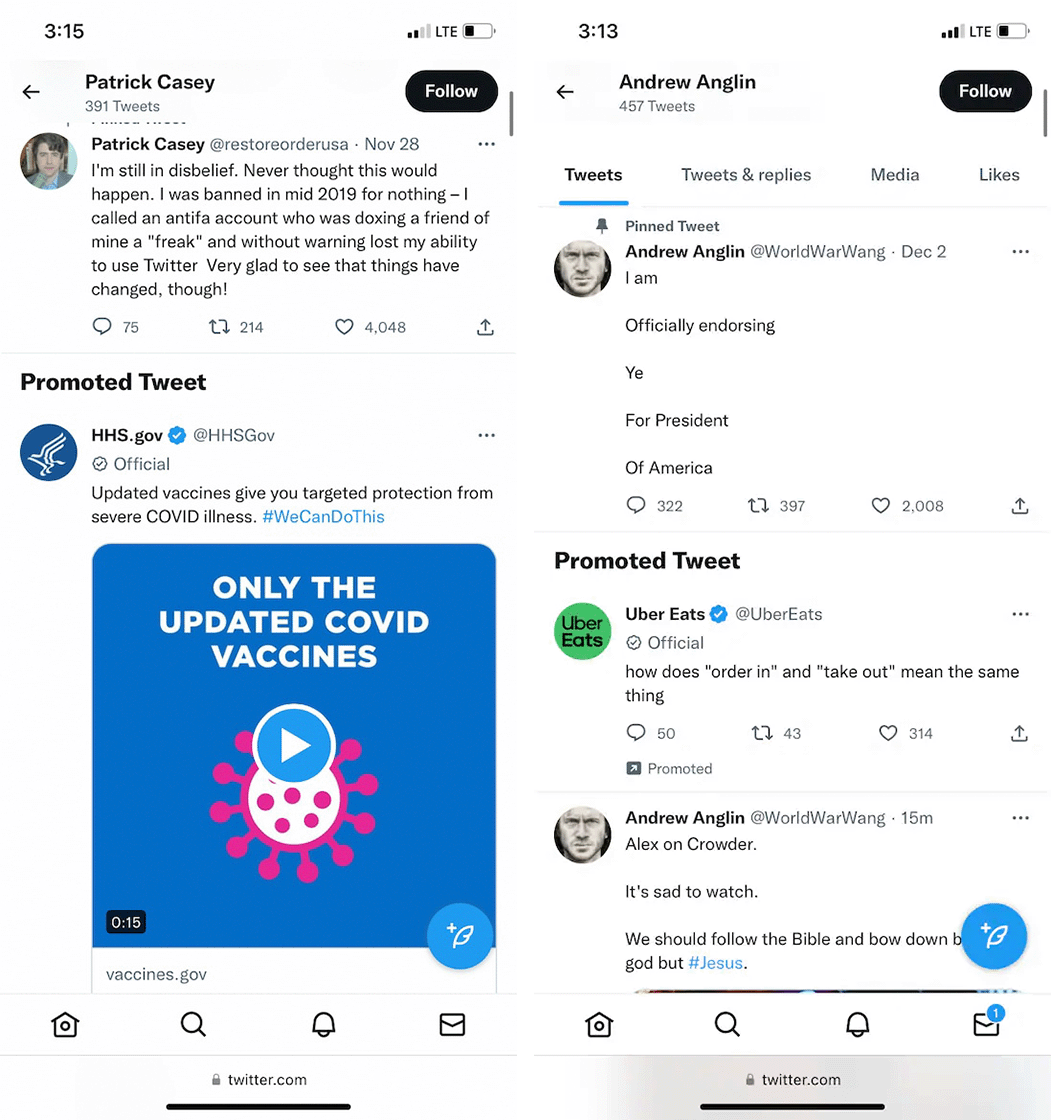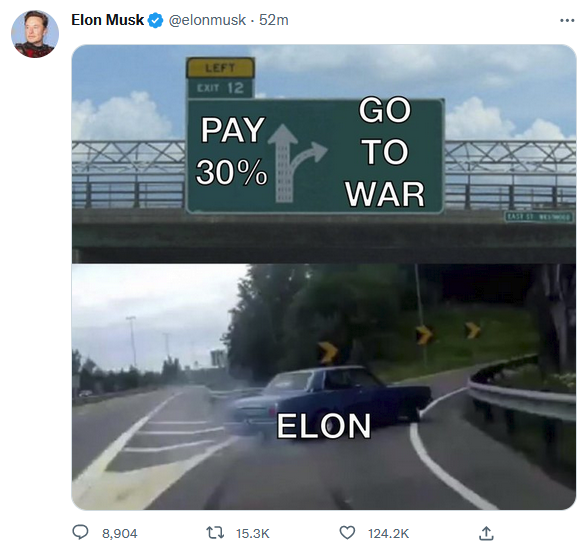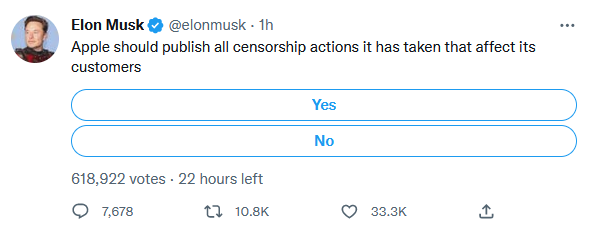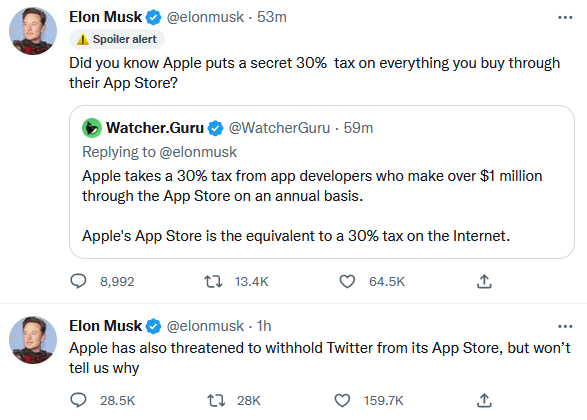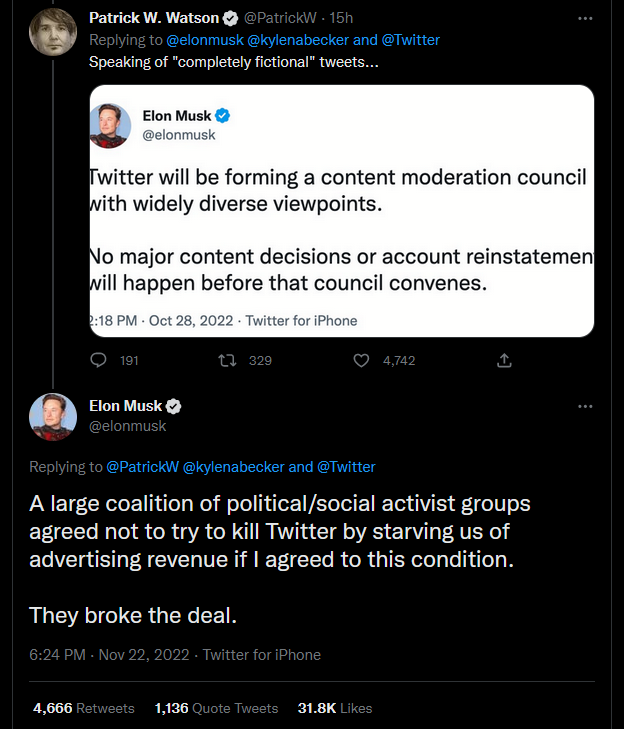Twitter CEO Elon Musk said the company is working on a software update that will let users know if they’ve been ‘shadowbanned,’ explain why they were shadowbanned and offer a way to appeal.
Shadowbanning, for those unfamiliar, is a term referring to the suppression of posts on social media websites. This can come in various forms, such as limiting how an account can show up in searches or trends on the platform. Musk’s tweet about the shadowbanning appeal process followed another round of ‘Twitter Files,’ an ongoing series of tweets detailing findings from internal Twitter documents.
Twitter is working on a software update that will show your true account status, so you know clearly if you’ve been shadowbanned, the reason why and how to appeal
— Elon Musk (@elonmusk) December 9, 2022
So far, journalists Matt Taibbi and Bari Weiss have published Twitter Files threads, with Weiss’ December 8th thread focusing on Twitter’s “secret blacklists” and shadowbanning. Weiss also shared details about the ‘Site Integrity Policy, Policy Escalation Support’ (SIP-PES) group, composed of Twitter’s former head of legal, policy, and trust Vijaya Gadde, former head of trust and safety Yoel Roth, and former CEOs Jack Dorsey and Parag Agrawal, among others. According to Weiss, SIP-PES handled some of the more sensitive content decisions, particularly around accounts with high follower counts.
However, much of what Weiss claimed to reveal was previously documented by Vice in 2020 after several high-profile accounts were hacked.
what Bari Weiss is “unveiling” in her Twitter Files part 2 is also how Elon Musk said he was going to run content moderation on the platform https://t.co/sRE2oO6A8d pic.twitter.com/PQ0YQvkPuR
— Matt Binder (@MattBinder) December 9, 2022
Moreover, Musk previously tweeted that under him, Twitter would pursue a policy of “freedom of speech, but not freedom of reach.” Musk went on to describe a content moderation approach that would downrank and demonetize “negative/hate tweets,” which sounds a lot like the shadowbanning practices that Weiss claims to have uncovered.
Twitter Files may violate FTC agreement
Right-wing accounts have long claimed to be victims of shadowbanning and Weiss’ thread tried to build on this narrative. However, Weiss tweeted images of internal documents revealing far-right, anti-LGBT Twitter account ‘Libs of TikTok’ had received special treatment from Twitter and the account had been internally marked as requiring consultation with SIP-PES before moderators could take action. Libs of TikTok is known for inciting harassment and violence against teachers, children’s hospitals and more, with the account being blamed for bomb threats at some U.S. hospitals.
Per a SIP-PES memo shared by Weiss, Twitter had repeatedly given the Libs of TikTok account temporary suspensions, noting the account “indirectly” violated the platform’s Hateful Content Policy. Weiss also pointed out Libs of TikTok was doxxed after Musk took over Twitter and that the platform allowed the doxxing tweet to stay up.
While right-wing accounts continue to play the victim card, The Intercept reported in November that Twitter began suspending left-wing accounts after far-right extremists directly asked Musk to investigate. Moreover, reporting from over a year ago highlighted Twitter’s own research showing that its algorithm amplified right-leaning content more than left-leaning.
On top of all this, Bloomberg reported that the screenshots shared in the ‘Twitter Files’ threads may violate Twitter’s 2022 privacy agreement with the U.S. Federal Trade Commission (FTC). That agreement stipulates that access to sensitive user account data should only be granted to people with a valid business justification for accessing that data. Weiss tweeted that the Twitter Files authors “have broad and expanding access to Twitter’s files,” and those files appear to include potentially sensitive user account data.
For the latest on Musk’s Twitter saga, read our coverage here.
Source: Elon Musk, Matt Binder, Bloomberg, (2)




